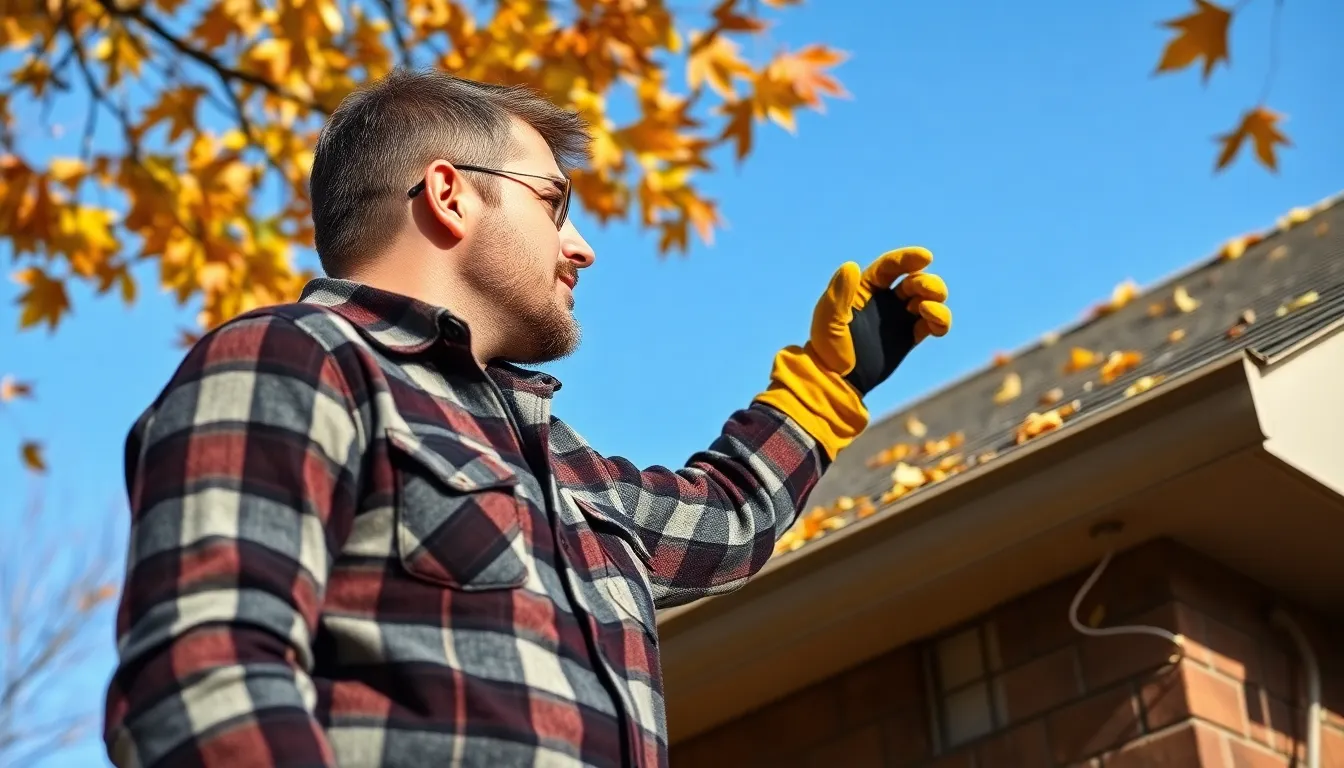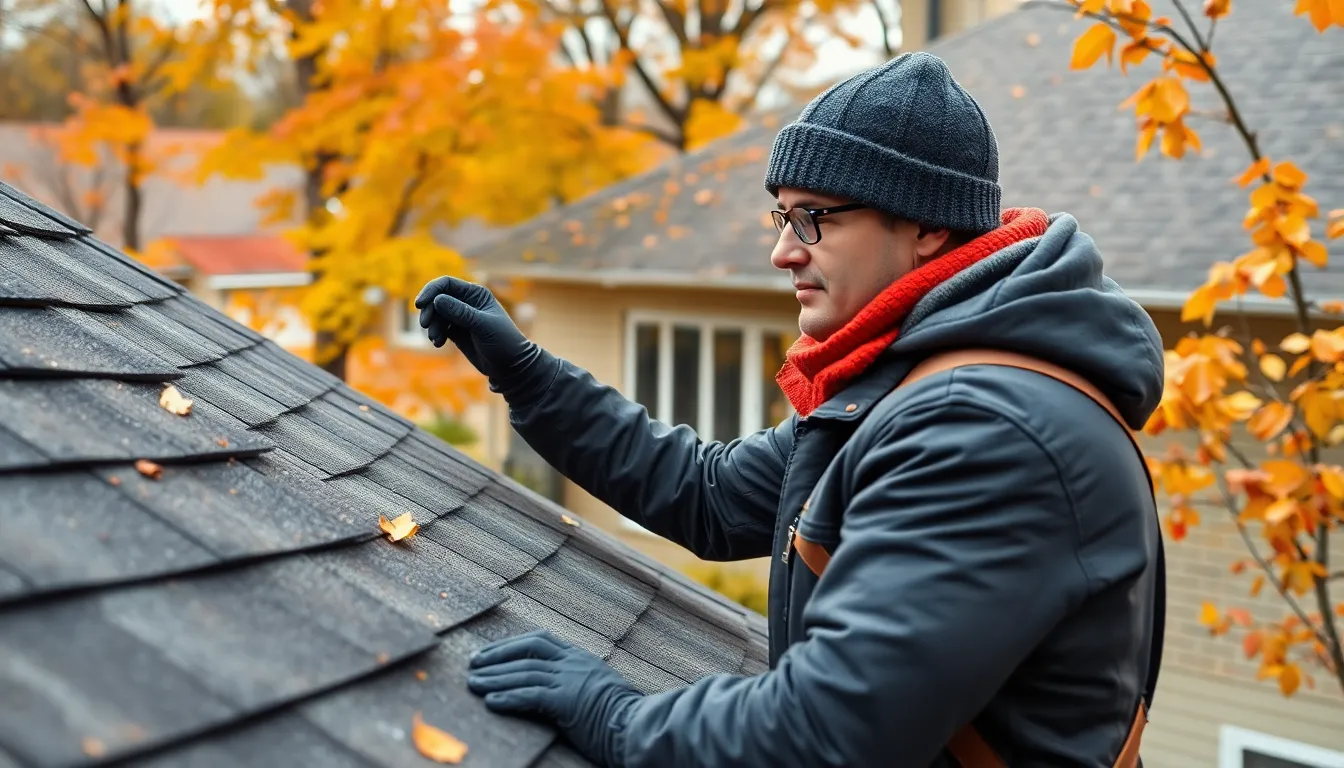As summer waves goodbye and the leaves start their colorful descent, it’s time for homeowners to embrace the joys of fall home maintenance. Think of it as prepping your castle for winter’s icy grip. Neglecting these tasks could lead to a home that’s colder than your ex’s heart after a breakup.
Table of Contents
ToggleImportance Of Fall Home Maintenance
Fall home maintenance holds significant value in preparing residences for winter challenges. Homeowners can prevent costly repairs by addressing issues before snow and ice arrive. Tasks such as cleaning gutters eliminate clogs that can lead to water damage and costly mold problems.
Regularly inspecting roofs ensures that leaks or missing shingles get discovered early. Foundations require attention too; sealing cracks prevents water intrusion that could frost damage structures.
Checking heating systems guarantees efficient operation during cold months. A well-functioning furnace not only promotes comfort but also saves on energy costs. Homeowners often forget to replace air filters, yet doing so enhances air quality and system efficiency.
Yard work becomes essential as leaves accumulate. Raking leaves reduces lawn suffocation and pests that thrive in decaying organic matter. Additionally, pruning trees prevents branches from breaking under the weight of snow, which could damage property.
Interior tasks, such as checking windows and doors, improve drafts’ insulation. Weatherstripping can cut heating bills significantly by keeping warm air inside. Furthermore, smoke detectors require testing for safety compliance, as failing to do so could lead to disastrous outcomes.
Proactive fall maintenance yields benefits that extend beyond winter. The efforts invested in this season enhance overall property value and provide peace of mind year-round. Homeowners who commit to these duties enjoy safe, efficient, and comfortable living environments, setting the stage for a successful winter.
Key Areas To Focus On


Focusing on specific areas during fall home maintenance ensures a smoother transition into winter. Key tasks create a safe and efficient living environment.
Roof Inspection And Repairs
Conducting a roof inspection helps identify leaks and damaged shingles before snow accumulation occurs. Look for signs of wear, such as missing shingles or curled edges. Assess flashing around chimneys and vents to ensure proper sealing. Repairing these issues now prevents leaks that can lead to costly interior damage. A clean roof also discourages ice dam formation during winter months.
Gutters And Downspouts Cleaning
Cleaning gutters and downspouts removes debris that blocks water flow and causes overflow. Overflowing gutters lead to water pooling around foundations, risking structural damage. Inspecting connections ensures downspouts direct water away from the home. Emptying gutters before the first frost prevents ice buildup, which can damage gutters and roof edges. Regular cleaning maintains effective drainage, protecting the property.
HVAC System Maintenance
Scheduling HVAC system maintenance ensures heating efficiency throughout the winter months. Change air filters to maintain air quality and system performance. Checking thermostat settings optimizes energy usage and comfort levels. Inspecting ductwork for leaks prevents heated air from escaping, decreasing energy bills. Additionally, professional servicing may include testing for potential carbon monoxide hazards, enhancing safety.
Preparing Your Landscape
Maintaining your landscape in the fall sets the stage for a thriving yard come spring. Completing essential tasks now minimizes challenges later.
Lawn Care Tips
Mowing the lawn before winter helps it stay healthy. Keep the grass around two to three inches tall for optimal growth. Aerating improves air circulation, promoting strong roots. Overseeding with cool-season grass varieties also enhances the lawn’s resilience. Watering as needed, especially during dry spells, supports growth. Lastly, addressing weeds in the fall prevents them from taking hold in spring.
Tree And Shrub Maintenance
Pruning trees and shrubs correctly contributes to their health and aesthetics. Focus on removing dead or damaged branches to improve structure. Late fall is ideal for planting new trees and shrubs to establish roots before winter. Mulching around bases protects plants from extreme temperatures. Inspecting for pests and diseases ensures early intervention, preserving overall plant health. Fertilizing late in the season helps plants gather nutrients for the upcoming growth period.
Interior Maintenance Tasks
Interior maintenance during fall aids in ensuring comfort and efficiency as the colder months approach. Important tasks include checking for drafts and inspecting plumbing systems.
Check For Drafts And Insulation
Identifying drafts helps maintain a consistent indoor temperature. Homeowners should examine windows and doors for any air leaks. Caulk and weatherstripping provide simple solutions to seal gaps, improving energy efficiency. Insulation in attics and crawl spaces must also be checked for efficacy. Adequate insulation prevents heat loss, reducing heating costs during winter. It’s essential to address any issues promptly before colder temperatures set in.
Plumbing Inspections
Inspecting plumbing systems in fall prevents freezing pipes and potential water damage. Homeowners should examine exposed pipes, especially in unheated spaces like basements and attics. Insulating these pipes with foam sleeves effectively prevents freezing. Additionally, checking for leaks around faucets and toilets is crucial. Small leaks can lead to significant water waste and structural issues over time. Finally, draining outdoor faucets and hoses helps avoid damage from freezing temperatures.
Safety Preparations
Ensuring safety at home during fall is essential as temperatures drop and heating systems are activated. Taking proactive steps can significantly enhance safety and comfort.
Smoke And Carbon Monoxide Detectors
Testing smoke and carbon monoxide detectors is critical as colder months approach. They should function properly to provide early warning of fires or gas leaks. Homeowners must replace batteries annually and consider replacing detectors every ten years. Installing alarms in every sleeping area and on each level of the home increases safety. Regularly checking that they emit a loud beep when tested ensures that they’re operational.
Emergency Kits
Building an emergency kit prepares homeowners for unexpected situations during fall and winter. Each kit should include essentials like water, non-perishable food, flashlights, batteries, a first-aid kit, and a multi-tool. Having blankets and warm clothing safeguards against cold temperatures. Homeowners can store their kits in easily accessible areas like closets or under beds. Regularly checking and updating supplies ensures the kit remains ready for any emergencies.



